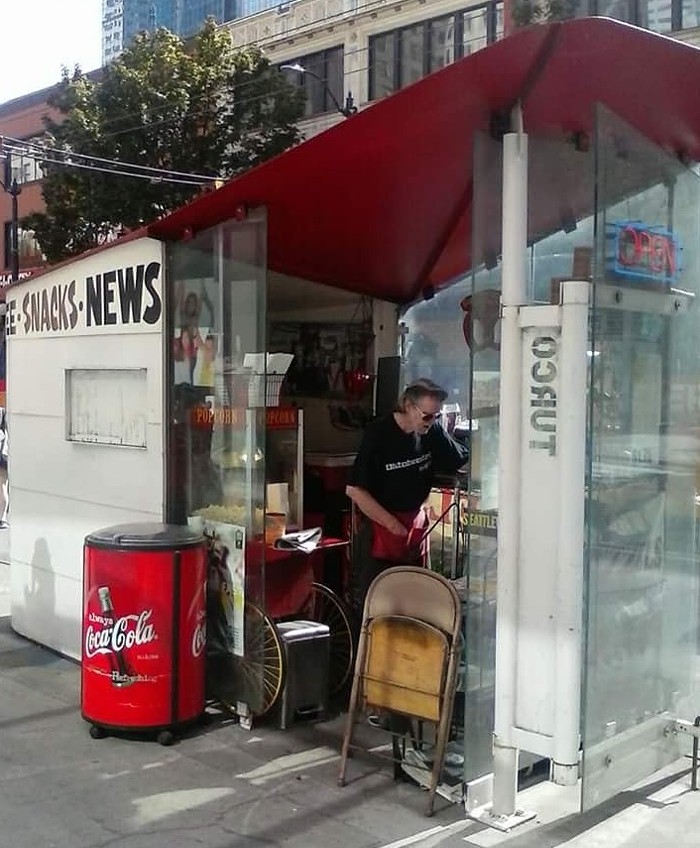
The smoke. Oh my fucking god, the smoke. You don’t get it until you see it. It’s thick and hot and makes your eyes water and the back of your tongue itch. The burned landscape looks like the fucking moon. Or Mars. Hills obliterated by the Carlton Complex fire last year are now blanketed with smoke. You can barely tell a smoky mountainside from a thinned lake the color of milk. And some people are smoking outside. And picking fruit. And rebuilding houses from last year's fire while a new wildfire rages nearby.
When Nila Sutherland, 13, went to volleyball practice at the Brewster High School on Wednesday, she met a big, smoky haze hovering in the middle of the gym.
"And the question was, where are we supposed to run, how are we supposed to practice?" she said. "I was like, 'Coach, I'm not going to do this. There's a big, old haze in the middle of the gym. You see it, too. Everybody sees it. I'm not going to run.'"
Two of Washington State's biggest wildfires, the Okanogan Complex and the North Star, surround a string of towns on the Okanogan River and homes on the Confederated Tribes of the Colville Reservation. Communities have been trapped under a dangerous lid of smoke for days. The haze obscures whole mountainsides and sits above rivers and creeks. Tiny flecks of ash have left thin layers of grime on cars parked overnight.
"That's something that I'm worried about," Nila's mom, Karen Sutherland, told me while she and her family labeled disaster relief goods donated at a former bingo casino on the Confederated Tribes of the Colville Reservation.

Earlier this week, the Okanogan Complex broke a state record, surpassing last year's devastating Carlton Complex in the number of acres burned. Nearly 1,800 firefighters are working to control the Okanogan Complex, fires that cover 287,704 acres. The North Star Fire grew to 170,000 acres yesterday and, according to the federal Incident Information System, has less than half the resources—just 648 firefighters. The smoke from all fires in the area has limited firefighting air crews for the last four days, according to Todd Pechota, incident commander for the Okanogan Complex. Gary Roberts, spokesperson for the Okanogan Complex Emergency Operations Center, says that increased numbers of people are coming to hospitals with respiratory problems.
An air quality monitor in Omak, Washington projected hazardous levels of smoke today, tomorrow, and unhealthy levels on Saturday. For places without air quality monitors, people use a visibility test. If you can't see a mile away because of a wall of smoke, health authorities are recommending people stay inside.
Sometimes the wall appears closer than that. On Wednesday night, the Washington State Department of Transportation had pilot trucks stationed on Highway 20 to help guide cars through the smoke. A WSDOT worker showed photographer Alex Garland and me a trick: Turn a flashlight upside down at night and watch all the particulate matter you're breathing in light up.
Dave Hilton, environmental health director at Okanogan County Public Health, says that the air quality has been at hazardous levels for at least three days. But it's hard to tell if it hasn't been like this longer. Stress blends the days together. "We're running like crazy here because some of us got burned out," Hilton said.
Hilton's mother's home was one of the first to burn in a fire that blew through Omak and Okanogan. Hilton had to evacuate his home, too, even after he protected his property with a self-made fire line.
"I drove out in the flames," Hilton said. "That's the only way to describe it. We had cyclones or tornadoes of flame between my place and my mom's place, probably 100 feet in the air, burning sagebrush plants and bouncing off the equipment that I was carrying."
Post-evacuation, Hilton is still working. His office is helping distribute thousands of masks throughout the county.


















